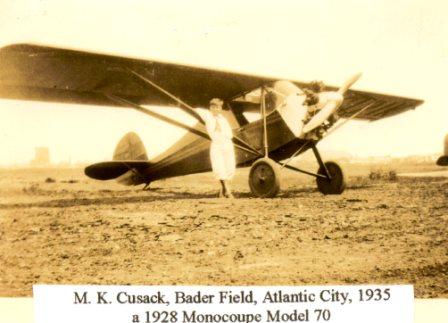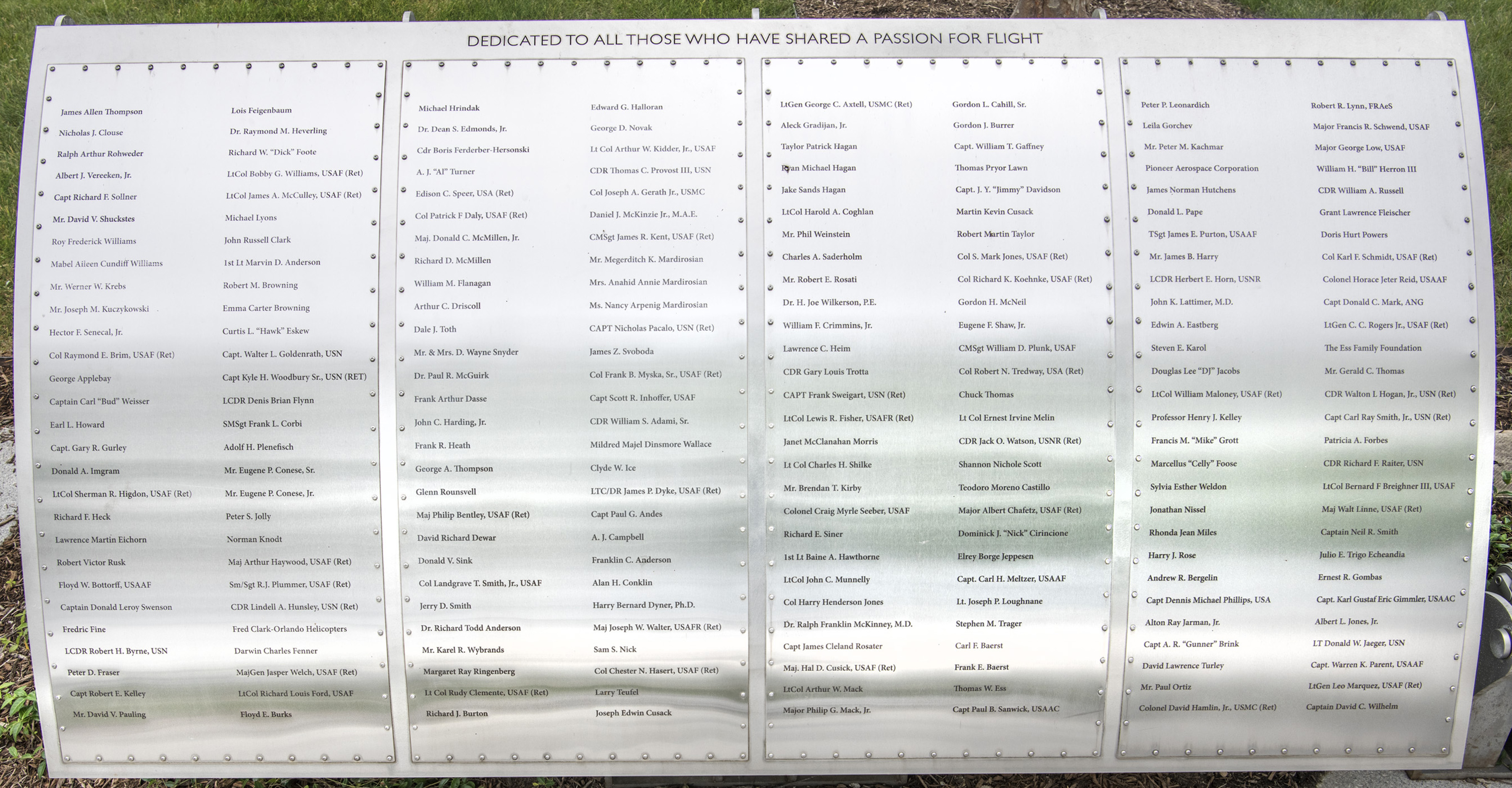
Foil: 27 Panel: 3 Column: 2 Line: 6
Wall of Honor Level: Air and Space Sponsor
Honored by:
Mr. William J. Midon
Airplanes, flying machines, were probably a natural attraction for all 3 to 4 year old boys in the early 1920s. At that time the impetus of World War I on the rapid development of aircraft, civilian as well as military, was luring young aviators to strive for records. Speed, altitude, endurance, distance, etc. - records of every imaginable measure were being set and broken almost daily. Lindberg's New York to Paris flight sharpened my interests, as did my father's being on a committee of welcome for James Fitzmaurice, the co-pilot of the first non-stop east to west flight over the Atlantic. Our family had a summer home in Atlantic City, a place that by its surround of water drew enterprising pilots of early flying boats; they sold rides for $15. A new word "airport" was coined, and its first usage described the Atlantic City Inlet, the port of the flying boat service.
In addition to the "airport" at the Inlet, where I saw my father get soaked with over-the-bow spray as a passenger on a $15 flight in a Curtiss 02 Seagull, our home was an easy five-minute bike ride from Bader Field, Atlantic City's port for land planes. And, too, it was a short trip to Lakehurst to see the Navy airships: Los Angeles, Akron, and blimps. When regularly arriving in the U.S., the Hindenburg cruised over the beaches. We were fascinated watching the Akron launch and recover her complement of six Curtiss XFC-2 scout planes during exercises out over the ocean. As young boys, my brother Edwin and I were never far from the sights and sounds of aircraft. I kept a box camera at the airport and, whenever an unfamiliar sound was heard and a different type of plane flew over our house, I rode to Bader field and took pictures. During 1935-36 I made over 100 photos, a record of the rapidly disappearing "Golden Age of Aviation". The collection includes Chamberlin's Curtiss Condor, Lockheeds of Amelia Earhart and Wiley Post, plus a variety of Stinsons, Fairchilds, Sikorskys, autogiros, Wacos, Stearmans, D-H Moths, Heath Parasols, Buhl Pups, Bellancas, Beechcraft, Franklins, Travelairs, Monocoupes, Challengers, Swallows, Ryans, Pitcairns, Aeroncas, Fokkers, and Fords. Secretary of War George H. Dern had a home in Atlantic City attracting associates in military planes such as groups of Consolidated PT-ls, Douglases (0-25 A, 0-38, 0-38B, 0-38C, 0-43), Boeings (P-12, P-26A), Martins (B-12), Curtiss Falcons & Hawks, and sleek Northrups for the "Brass" and top officials. Gov. Hoffman used his own NJ Air National Guard.
Gone too, of course, are those military planes of the 1930s. Winters in Philadelphia were a time for building model airplanes and entering contests. I also helped my brother design and build a 22 foot wing span glider - it flew once and was wrecked when the gear collapsed on landing. Years later, on August 19,1944,1 met Orville Wright in Dayton, Ohio. It was his 73rd birthday. Later still, I talked with Apollo 8 Mission Commander Frank Borman about meeting Mr. Wright. More recently I spent a little time with Reeve Lindberg as her guest at the Smithsonian, celebrating the 75 Anniversary of her father's New York to Paris flight. I have a pretty good "how-to" knowledge of flying but there was never a purposeful reason to take lessons, unlike my brother Edwin, who was taught
by the U.S. Air Force. To this day my interest in aviation remains undiminished.
Wall of Honor profiles are provided by the honoree or the donor who added their name to the Wall of Honor. The Museum cannot validate all facts contained in the profiles.
Foil: 27
